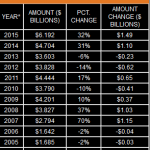Augmented reality and its healthcare benefits
Augmented reality and its healthcare benefits
Augmented reality (AR) is a technology through which the view of real world environment is supplemented by computer-generated elements such as graphics, video and audio. Augmented Reality relates to mediated reality, in which a view of realism is altered using a computer system. Graham, Zook & Boulton (2013) defined Augmented Reality (AR) as, a live view of real-world objects in which features of the object are enhanced by computer-generated sensual inputs like audio, video, graphics etc. AR technology enhances one’s current perception of reality. This technology duplicates the world’s setting in a computer. An Augmented Reality (AR) System combines a real scene as observed by the user with an enhanced scene generated by the computer. The system augments the scene with additional information to enhance sensory perception virtual world. The main goal of Augmented Reality is to provide a very near to real view of the real world to the user such that the user cannot differentiate between the two. Augmented Reality has its applications in almost every field including entertainment, engineering, healthcare, military training, robotics, manufacturing and almost all other industries.
AR technology has brought about significant transformations in medical and healthcare sectors. AR technology cannot only help save lives but also helps precision and efficiency in healthcare processes for organization. Despite being a very recent technology with almost of a decade of existence, the research in augmented reality has helped doctors conduct complex surgeries more effectively, improve health and fitness, teach complex medical subjects with effective elaborations and much more. Few of the countless healthcare applications and benefits are discussed below:
Food Scanner Apps
Augmented reality can help improve our dietary habits by using food scanner apps. Food scanner AR applications can help us see the nutritional information about foods in line of sight beside the food products to keep our diet plan healthy. Psychologically humans are stimulated to eat more if the size of foot item appears to be small and vice versa. A Japanese group of developers is working on an Augmented Reality based application, which can augment the size of food to visually appear different from the real one to produce a psychological effect based on the requirement of the body. In addition, work is in progress on food color augmentation to make it appear more appetizing or less appetizing as required.
Augmented Fitness Systems
Augmented reality integration into games industry for the purpose of fitness is another area of healthcare covered by augmented reality. AR headsets help gamers enjoy physical games with their friends, right from the comfort of their home and thus improving health and fitness. Google Glass is an example of one such innovations, which can not only record movements of the players but also provide real time suggestions based on proximity of other players to give the games a more realistic feeling.
AR Apps for Blinds
Another innovative application of AR is what guides visually impaired individuals through markers with augmented audio messages about their surrounding environment and objects of daily use.
Patient Care Management & Education
Augmented reality helps easy and effective patient care management. Patients’ details can be registered with apps like Google Glass instead of manual entry systems for easy retrieval, reducing human errors and accessibility. Simulation of patient vision helps practitioners easily educate patients about their problems and diseases.
Minimal Invasive Surgery
Augmented Reality benefits minimal invasive surgeries. Medical instruments and a camera inserted into patient’s skin through a minimal cut help operate as well as monitor internal operation on an outside screen. This reduces risks associated with and enhances success chances of minimal invasive surgeries.
Medical Trainings Made Easy
Demonstration is very crucial to learn surgical procedure as only theory does not effectively serve the purpose. Augmented reality technology makes medical trainings more interactive for easy and effective learning. By augmenting digital information in the form of audio, video or multidimensional models onto human body and its functions makes it a reality view for the students’ better understanding. AR contents integration in to medical textbooks makes it easier to understand the written concepts.
-
Pharmacy Benefit Management
Augmented reality adds to the efficiency and effectiveness of Pharmacy Benefit Management systems. A Google Glass application reminds patients about taking medications from time to time. The application also provides necessary diet recommendations based on health condition of the patient. Not only this, but AR also provides information on drug overdose and its adverse effects.
Literature is full of such examples of AR applications. In short, augmented reality is a technology that will really rule the future in almost all respects that human mind can think of.
Technology for my career
Being a student of healthcare administration and having studied business management minors, I plan to pursue a career in healthcare business management. Keeping in view the competition in the market everyone strives for the best facilitation of the customer regardless of the focus market. Therefore, I believe that I must find and understand a technology that I can use to help enhance my career prospects.
Having studied about the numerous innovative solutions provided by Augmented Reality in the area of healthcare, safety and management, I aim to advantage from this technology. This technology will not only help me easily administer and manage day-to-day operations of the business I will work in but will also facilitate my customers.
References
Graham, M., Zook, M., & Boulton, A. (2013). Augmented reality in urban places: contested content and the duplicity of code. Transactions of the Institute of British Geographers, 38(3), 464-479.





